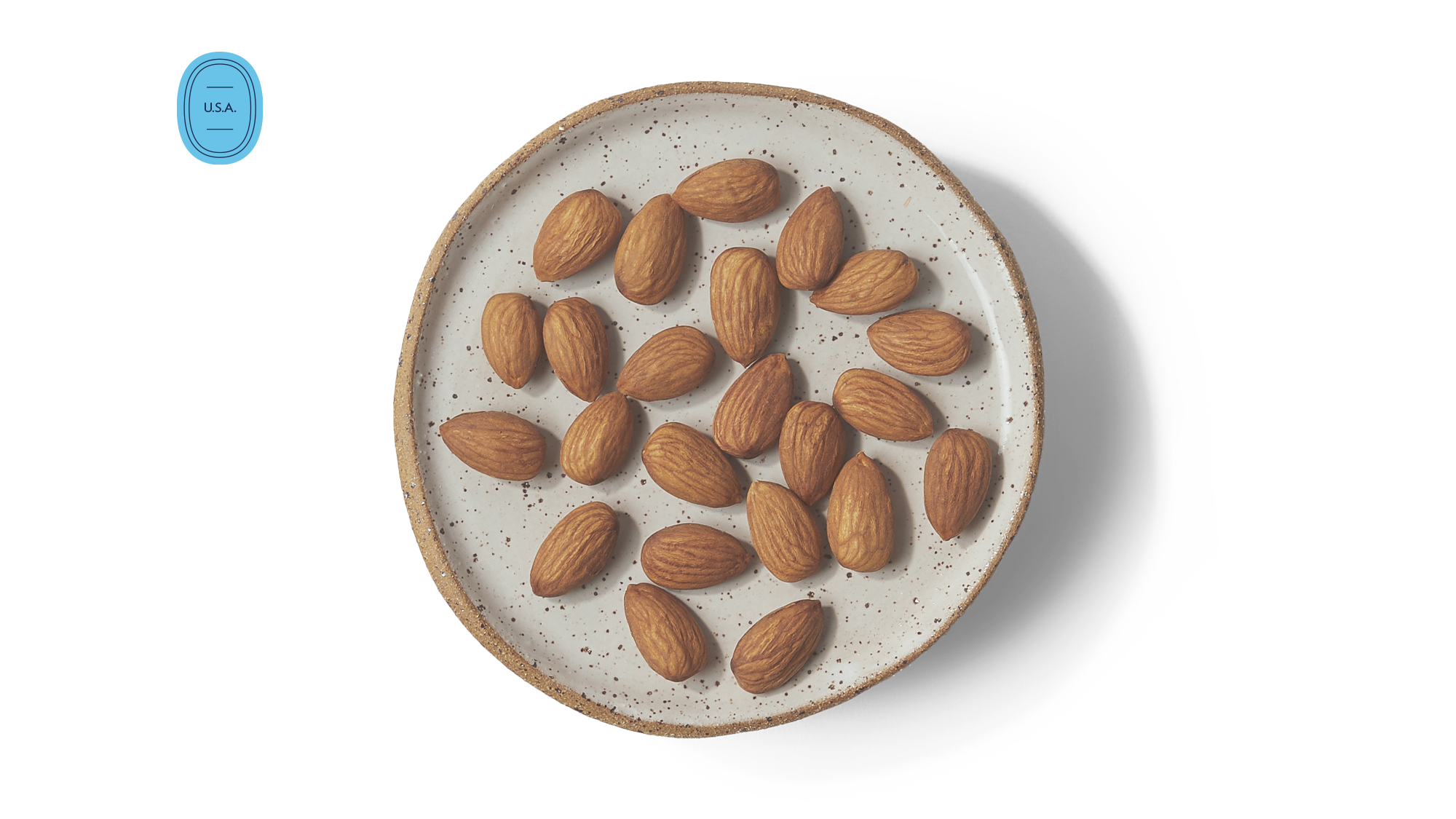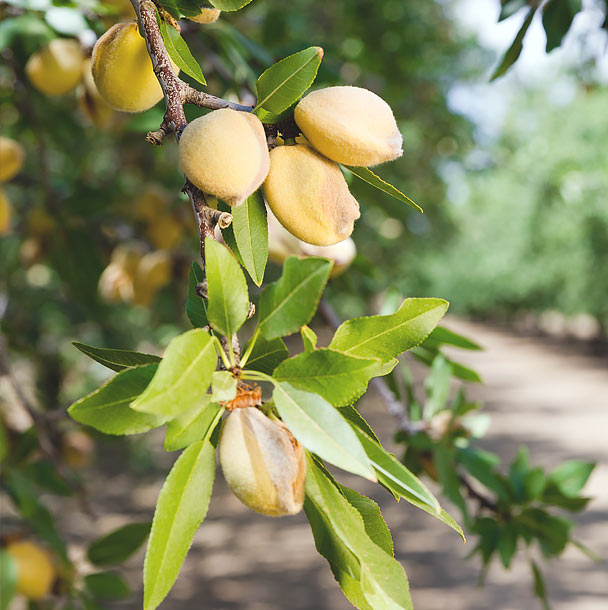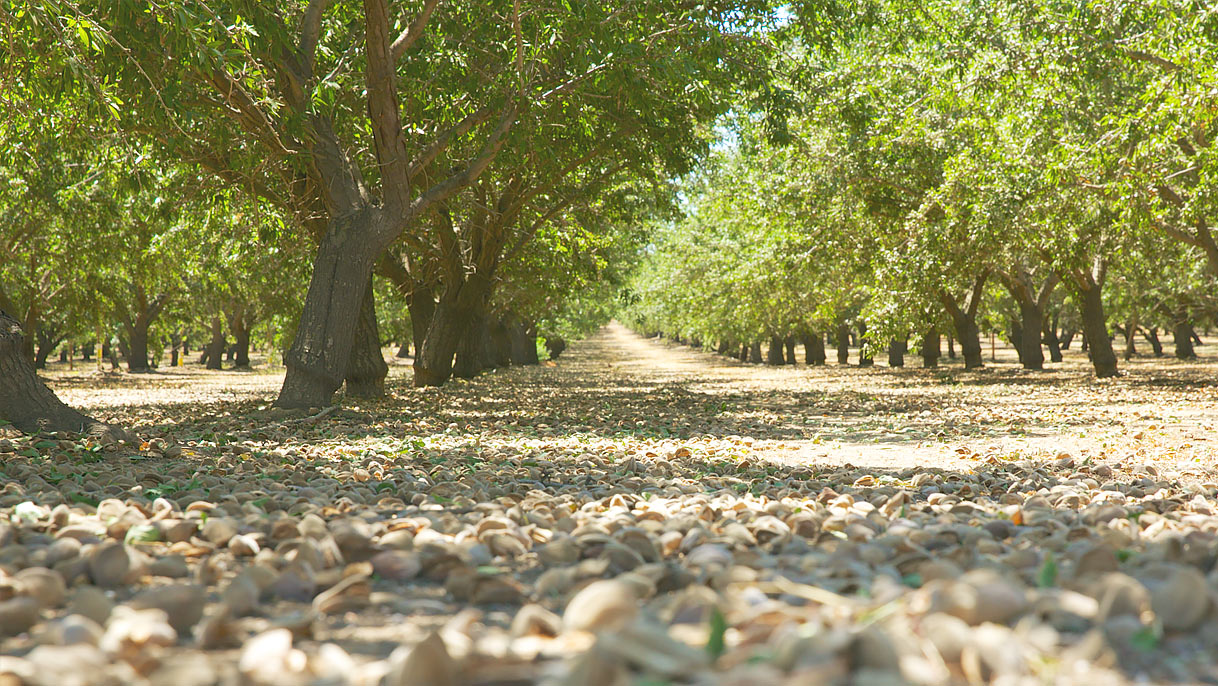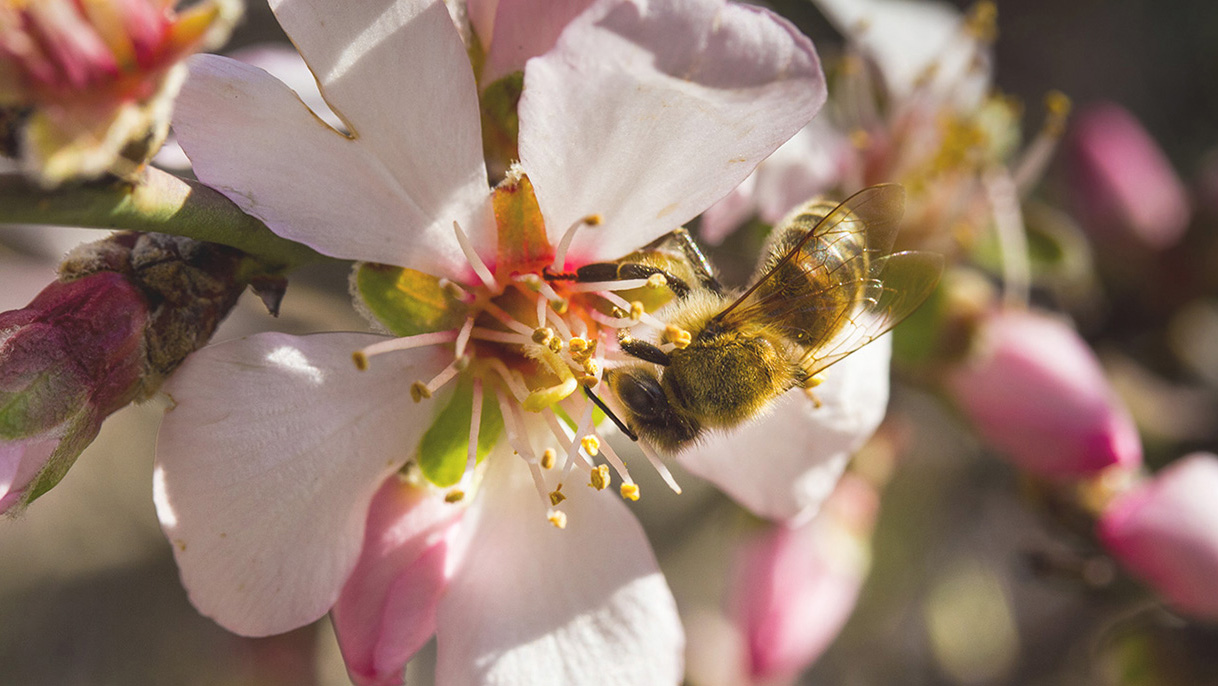It’s in their nature
To Be Nutritious
Not only are almonds delicious, they’re among the lowest calorie nut with just 160 calories per one-ounce serving and contain more calcium than any other snack nut. Considered heart healthy, every serving includes 6 grams of plant protein, 3 grams of fiber, 13 grams of “good” unsaturated fats and just 1 gram of saturated fat1. Just one ounce of almonds contains about the same amount of polyphenols as a cup of broccoli or green tea2 as well as 40% of your daily allowance of antioxidant vitamin E.3








